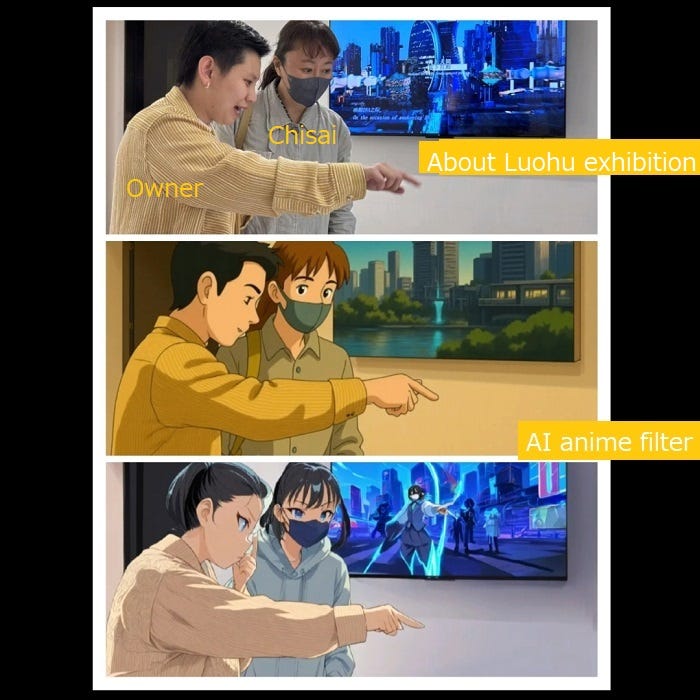<essays> Real Cultural Chaos Cities in Hong Kong and Shenzhen, China 2025-4
Chisai has been to Hong Kong and Shenzhen, China for the first time in five years! And she tells you the report in four parts in a series!
The question of identity became even more acute when I visited the editorial department of the Hong Kong art magazine where I have a series. I directly asked the president and editors, "Does Hong Kong have its own art history?" After a few seconds of thoughtful silence, they simply replied, "No, not really." This isn't about Hong Kong's current political status relative to China, or its past as a British colony. It delves deeper: what defines Hong Kong, its people, and its artistic soul? Is there a "Hong Kong-hua (Hong Konger painting)" equivalent to Japan's "Nihon-ga (Japanese painting)", not in terms of technique or material, but in spirit and identity?
After I arrived in Shenzhen, the exhibition concept revolved around "Rethinking Luohu District (罗湖区)," focusing on its role as the entrance to Hong Kong. This was explored through its transformation, from monochrome group photographs of residents in the 1980s to contemporary artistic representations. What struck me, beyond the visual evolution, was the surprising realization that China, too, would stage such "local love" or community-focused exhibitions. It made me wonder if people's consciousness has shifted towards localism since the pandemic, not just in Japan but globally, even China.
My experiences with new media art in Shenzhen were particularly fascinating. I visited an exhibition space at the Shenzhen Institute of Artificial Intelligence and Robotics, where the works integrated physics, science, and philosophy into truly immersive, bodily experiences. It’s here that the impact of China's pervasive electronic payment system becomes clear. Without the mental burden of dealing with cash, artists and viewers alike seem freer to engage deeply and unreservedly with new media art. This digital fluency allows for a kind of artistic freedom that might be harder to achieve elsewhere.
If someone were to ask me now where I'd prefer to live, my immediate answer would be Shenzhen. Its dynamic energy and constant innovation are incredibly compelling. However, there's a practical reality: I currently don't use electronic money, which means I wouldn't be able to survive there independently. This highlights another layer of Shenzhen's "chaos" – a vibrant, cutting-edge cultural landscape that is paradoxically inaccessible without full immersion in its digital ecosystem. It's a city of tomorrow, but one that demands you adapt to its very modern rules.
~~~ <essays> Real Cultural Chaos Cities in Hong Kong and Shenzhen, China 2025-3







